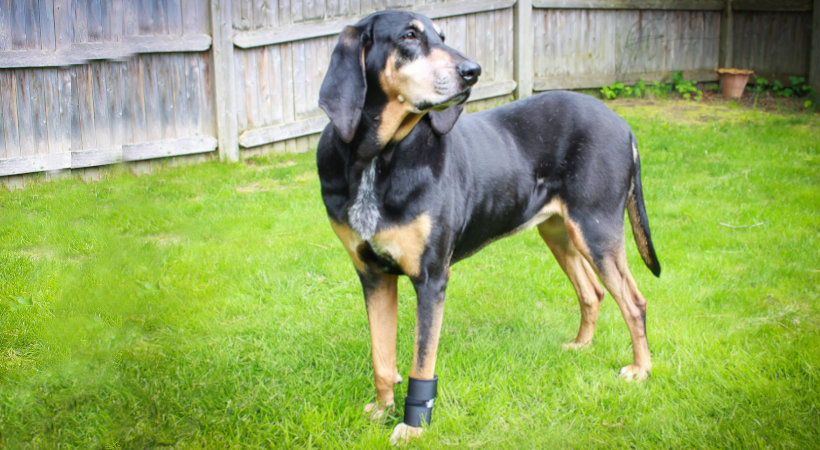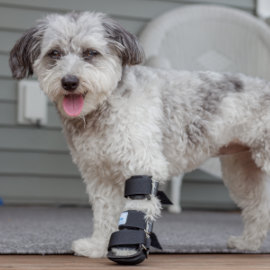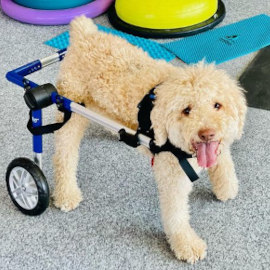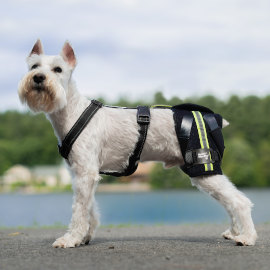What’s Degenerative Joint Illness (DJD)?
Degenerative Joint Illness is extra generally often called arthritis or osteoarthritis. DJD is a progressive situation the place the cartilage between the joints step by step deteriorates over time. Cartilage turns into brittle and, in extreme circumstances, breaks away, sporting on the bone, resulting in a decreased blood provide, bone spurs, and even joint instability.
Typically, DJD in canine is genetic. Though different components similar to a canine’s diet and the joint conformation may contribute. An obese canine will place extra weight and pressure on it’s joints which might put them at an excellent threat of experiencing joint ache and discomfort.
Indicators and Signs of Degenerative Joint Illness
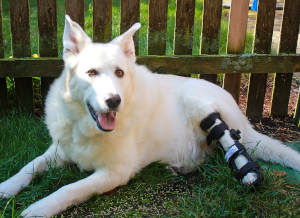
Overweight canine are most in danger for creating DJD; weight and eating regimen administration of obese canine is beneficial to decrease the danger of creating DJD. Indicators of degenerative joint illness often present in middle-aged and senior pets. Indicators embrace:
- Reluctance to go on walks or strolling at a slower tempo
- Lethargy and sleeping extra usually
- Joint stiffness
- Taking extra time to face up
- Issue getting within the automobile
- Sitting with their hind legs stretched out
In additional superior circumstances the canine might refuse to stroll on the affected leg, which results in different mobility points.
Treating Canine Osteoarthritis and DJD
Harm attributable to DJD is irreversible, though there are numerous steps you’ll be able to take to alleviate your canine’s joint ache and enhance their high quality of life.
NSAIDS and Medicine
Joint irritation from DJD may be medically managed utilizing NSAIDs, ache treatment, and every day joint dietary supplements. Your vet will develop the proper course of remedy on your pet.
Laser Remedy for Joint Ache
Laser remedy is a painless, non-invasive remedy choice to cut back irritation and joint ache in pets with DJD. Typically, laser remedy is just one element of a pet’s remedy plan. And for one of the best final result, laser remedy needs to be mixed with different types of canine rehabilitation.
Hip Help
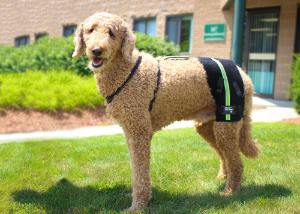
Canine hip braces are helpful for pets with hip joint ache and irritation.
A hip assist system combines compression and lifts within the joint to make actions much less painful whereas supporting the hip joint. Hip braces for canine are very important to holding pets with hip circumstances ambulatory and strolling.
Canine Joint Help
Canine coping with degenerative joint illness of their decrease legs may have the joint to be braced. Sporting a leg brace or splint gives stiff assist together with joint stabilization.
Whereas DJD isn’t sometimes a situation with a number of irritation, an arthritic joint might swell. A pet with swollen carpal or hock joints will want an adjustable splint. An adjustable splint permits the splint width to be elevated or decreased to accommodate any swelling. A neoprene wrap or hugger protects the joint for lighter-weight leg assist.
Spinal Help
For pets with spinal arthritis or one other degenerative spinal situation, a canine again brace can assist to assist the backbone and alleviate again ache. The vertebraVe again brace options multi-tier assist that includes reminiscence foam assist layers and detachable metallic assist spines for optimum assist.
Wheelchairs Hold Pets Energetic
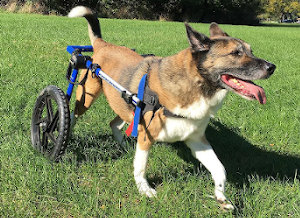
A canine wheelchair is good for the extra extreme circumstances of degenerative joint illness the place bearing weight on the again legs turns into not possible or too painful for a pet.
The wheelchair gives a canine or cat the assist they should preserve their lively life-style with out bearing full weight on their hind legs. If a pet is experiencing joint ache in all 4 legs, a full-support quad wheelchair will preserve them absolutely supported.
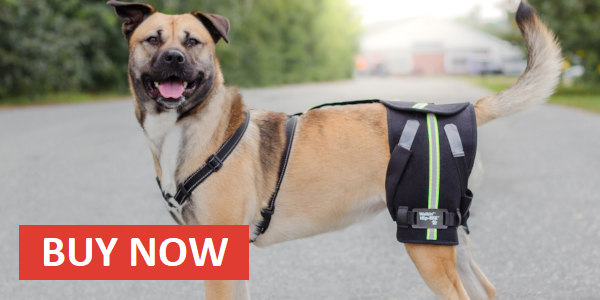
Associated Articles:
Did we reply all of your questions on “DJD in Canine”?


